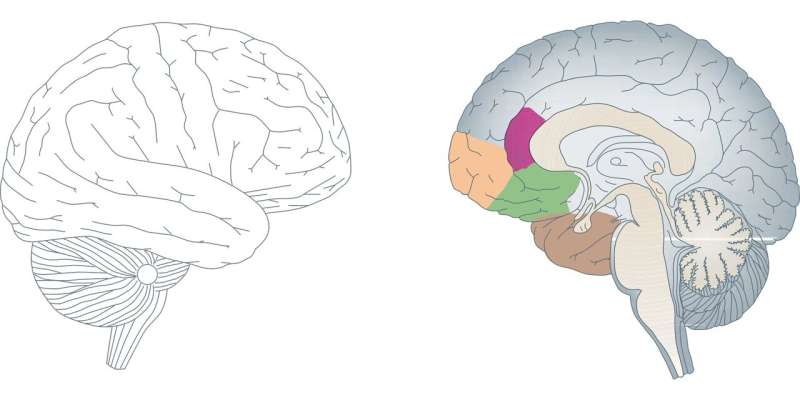
Emiliano Bruner, a paleoneurologist at the Centro Nacional de Investigación sobre la Evolución Humana (CENIEH), and Tim Schuurman, a doctoral candidate in his research group, have just published a paper in the Journal of Anatomy that employs anatomical network analysis to study the spatial organization of the brain in modern humans, as well as the spatial constraints that influence its evolution and development.
This is the first study to cover all the regions of the brain, including the subcortical ones, in an analysis of these anatomical networks. The results indicate that the internal gyri of the temporal lobes and the lowest parts of the brain are the elements with the most spatial constraints, which would have limited the possibility of major variations over the course of evolution. The study also draws out a division between the upper and lower regions, matching a similar separation of the elements of the braincase, which are freer to vary their morphology in the vault, but more tightly constrained geometrically at the base.
“In primates, the base of the skull is a complex anatomical system that participates in vital biological functions such as posture or chewing, so that it exercises a strong influence over the spatial organization of the brain. By contrast, the vault of the skull is a relatively simple anatomical system, in which the cranial elements are molded principally by the growth of the brain,” explains Schuurman.
Key regions
The objective of this research was to pinpoint key regions in the geometric balance of the brain in modern humans, to identify underlying patterns of spatial organization and understand how these could affect the evolution of cerebral morphology.
Earlier analyses conducted with simpler models had already highlighted a certain geometric complexity in the external surfaces of the temporal lobes. The present study shows that the situation for their deeper regions is also complicated.
“For instance, in the case of the parahippocampal gyrus, a fold of the brain that lies on the lower surface of each brain hemisphere, the constraints imposed on it are due to its great size and elongated shape. Transversal studies in multiple species of extant vertebrates seem to support the idea that the parahippocampal gyrus is one of the most ancient and stable regions in the brain,” adds Schuurman.
This model is a starting point for developing comparisons at both the phylogenetic and ontogenetic levels, to reveal limitations upon our brain architecture which could offer alternative insights into different pathological conditions.
CENIEH

